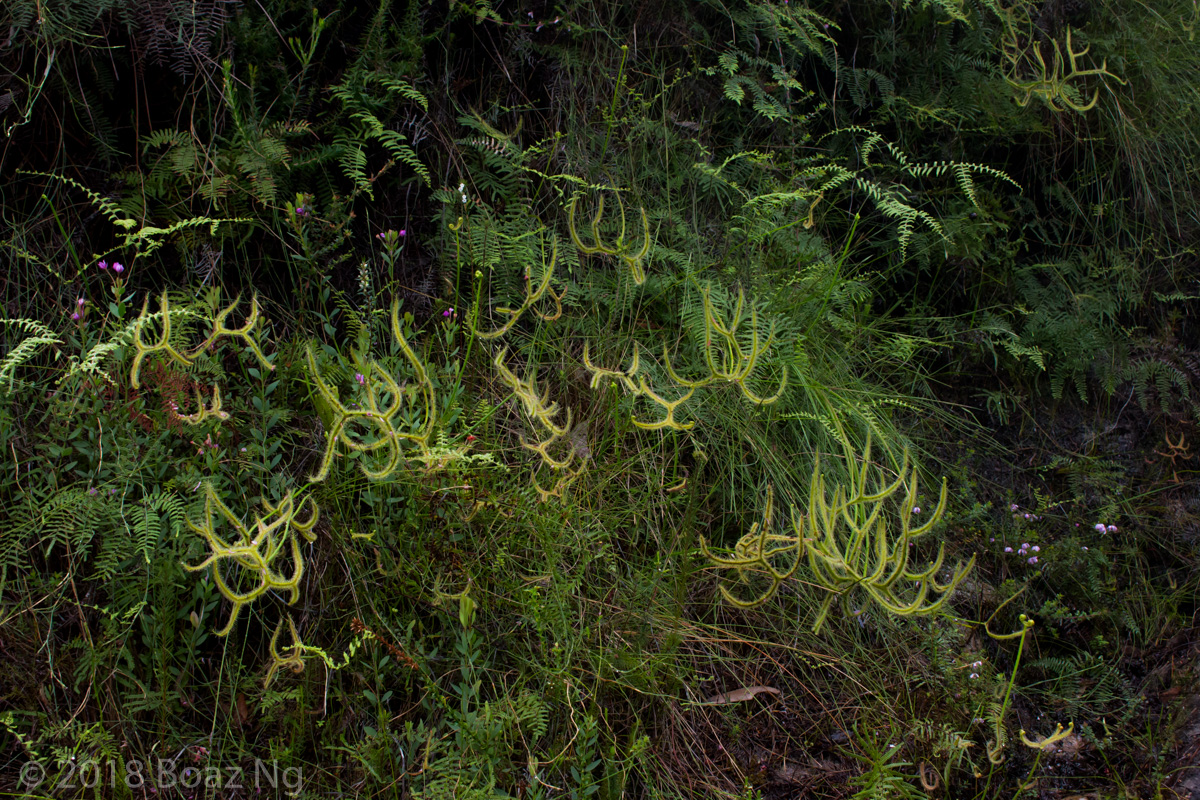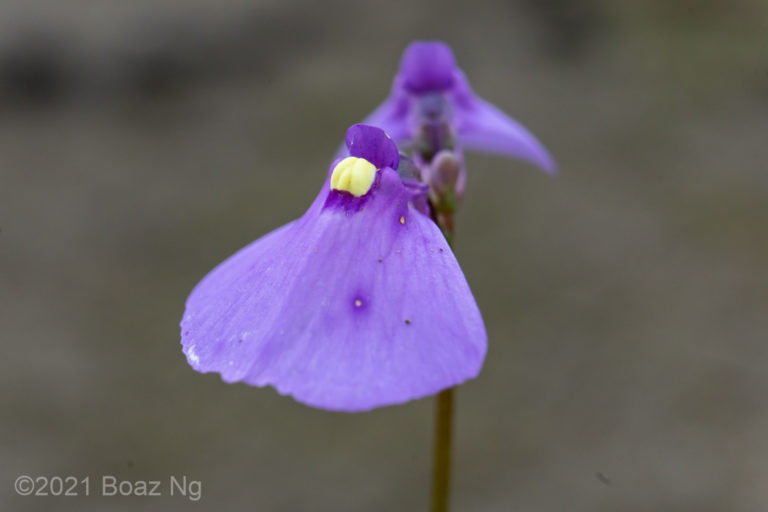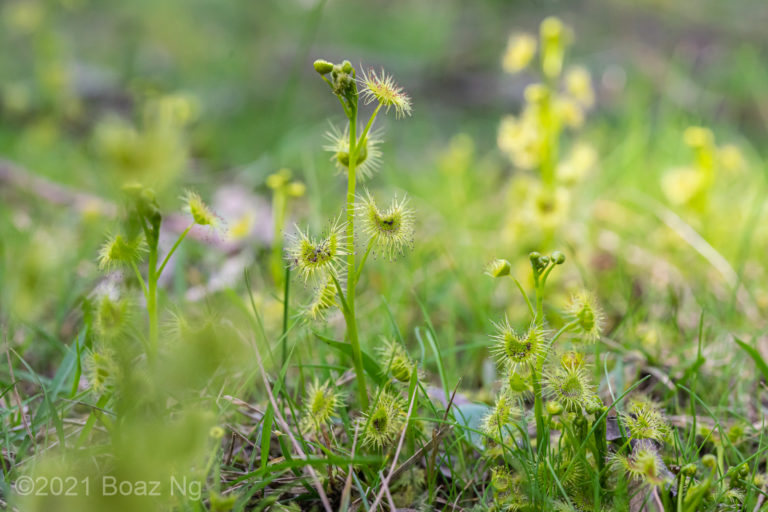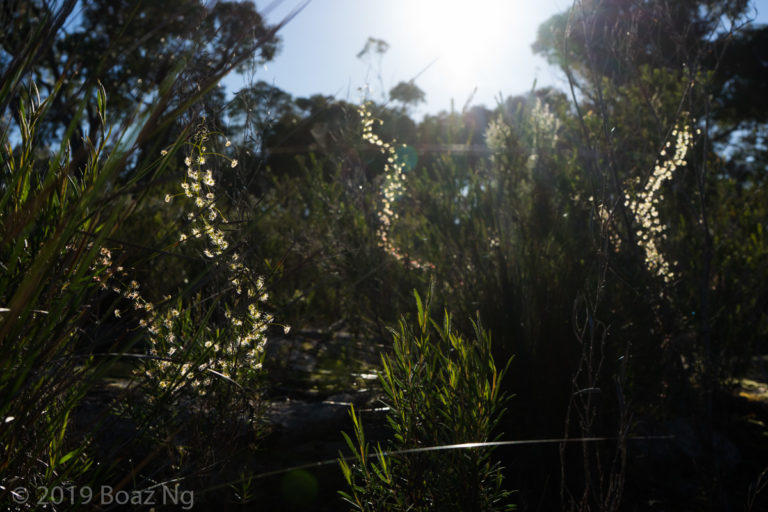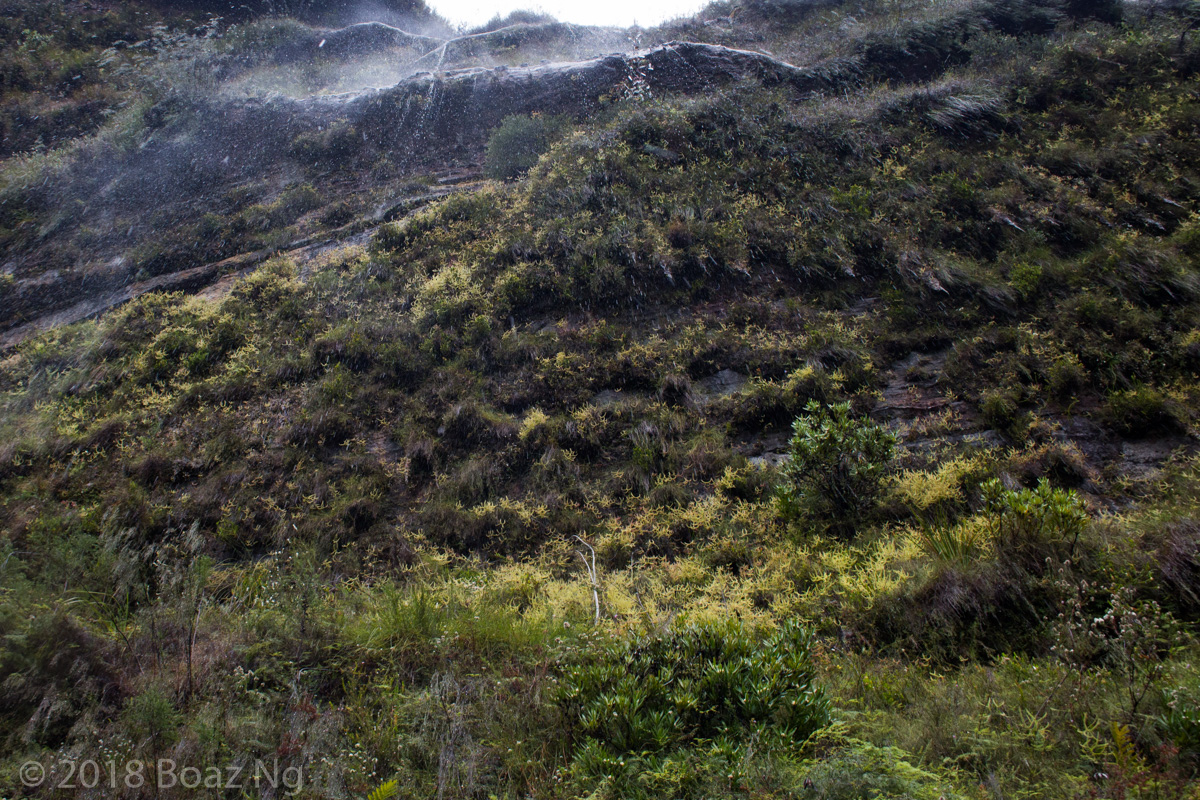
The Blue Mountains are a region of elevated sandstone bedrock eroded over millennia to form an impressive range of table top ridges dissected by canyons. The ridges plummet dramatically over vertical cliff walls into broad river valleys some 700 m deep. The ancient sedimentary origin of the mountains has resulted in alternating layers of groundwater-permeable sandstone, as well as impermeable layers of shale, sandstone and ironstone. At the cliff face, groundwater of the tablelands is either forced to flow over the edge, or seep out between the impermeable layers half way down the bisected rock face. These constant water seepages have led to the formation of a unique niche called a hanging swamp – accumulations of peat that quite literally hang over and drip down the vertical cliff faces. This wet, nutrient-poor and exposed habitat forms the ideal environment for Drosera binata and other carnivorous plants to thrive.
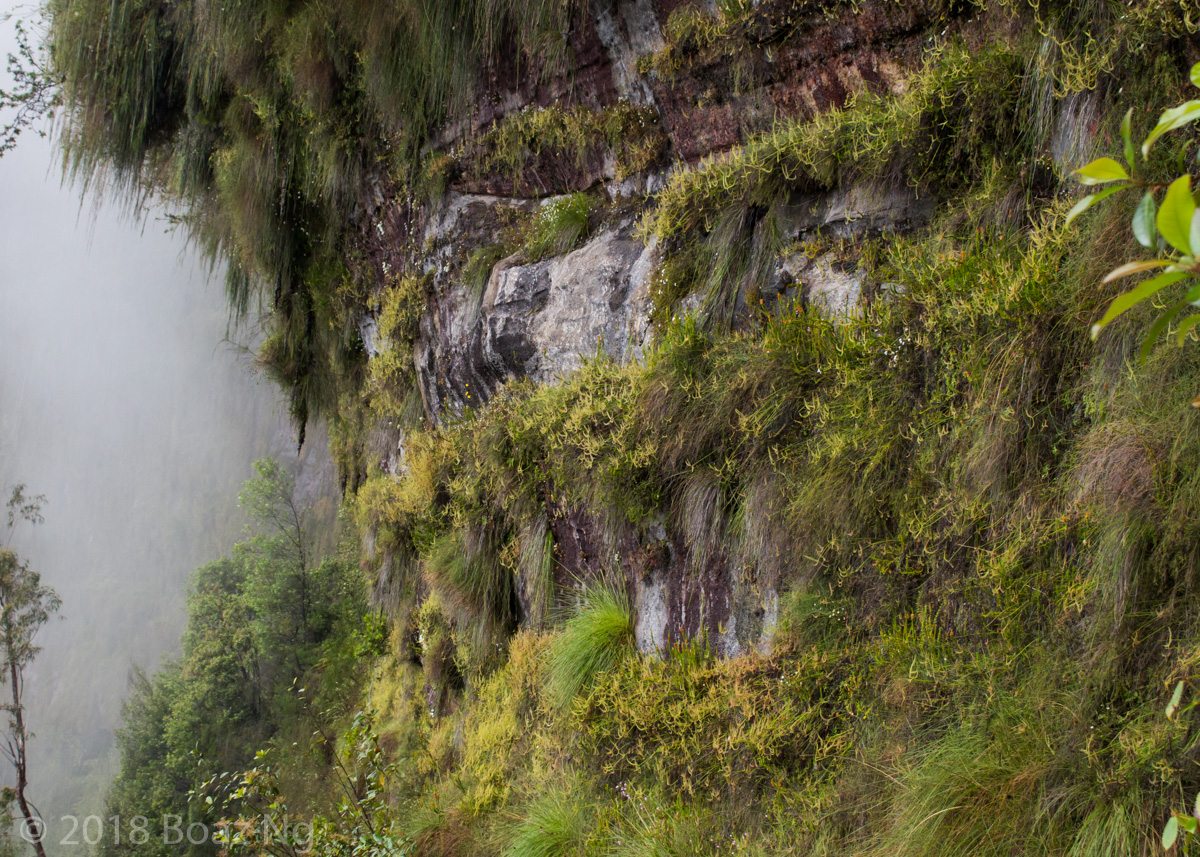
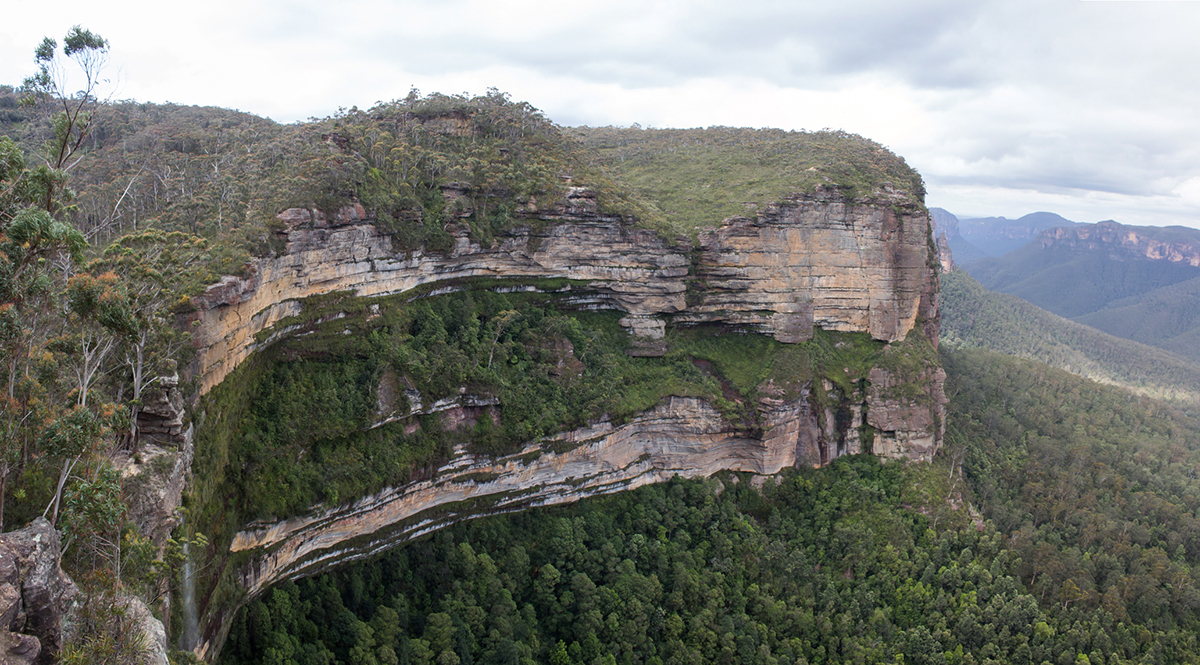
Drosera binata grows on the side of these cliffs in layers where the groundwater seeps out. In certain areas the plants grow so densely that the entire cliff face is dominated by their bright sparkling foliage – a truly beautiful sight as they catch the morning sun in their dew. Certain walks in the area allow you to descend the cliff face across these hanging swamps, and Drosera binata grows on the side of these trails in abundance.
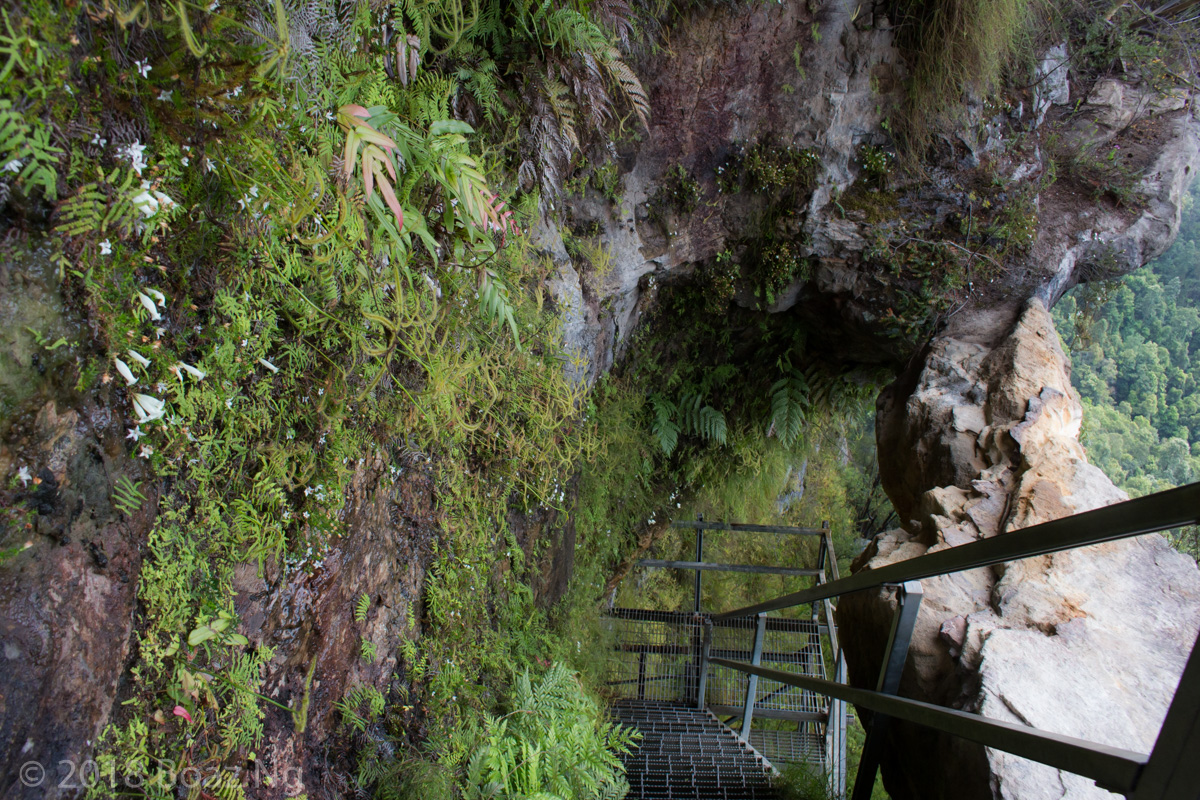
The dominant variety in the area is commonly referred to as the ‘dichotoma’ form, a large lime-green plant with laminas that generally fork twice or thrice and reach up to 20 cm from tip to tip. The leaf petiole is long, reaching around 1 m so as to extend beyond the thick sedge and ferns, and gracefully drapes down from the cliff surface. The white-petaled flowers, proportionately large for the genus, are borne on fleshy stems. The sepals of the dichotoma form are sparsely hairy with finely serrated edges.
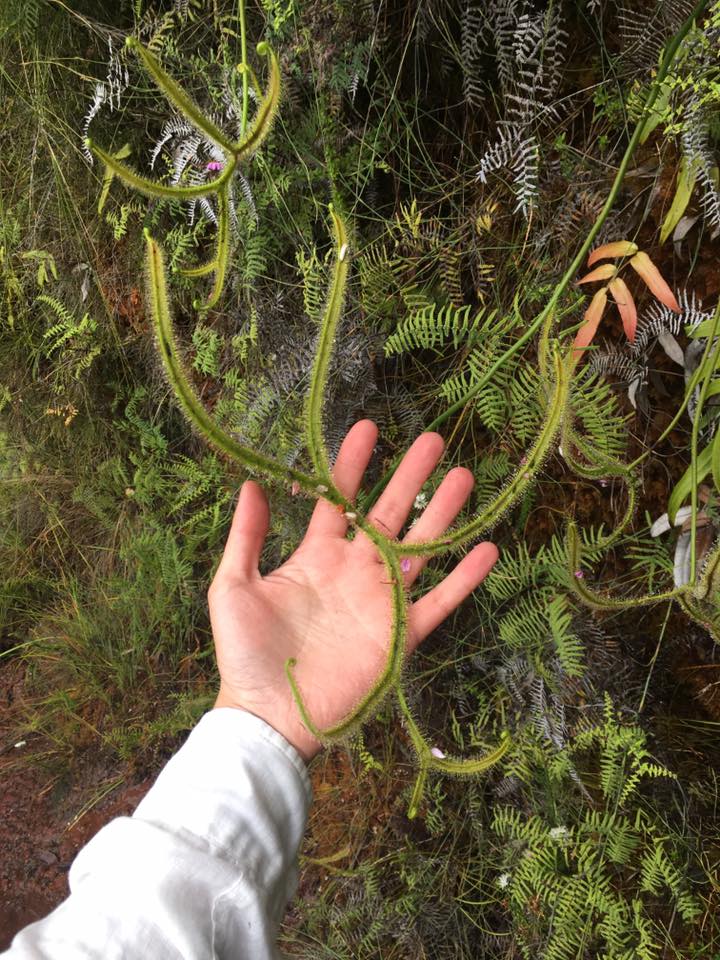
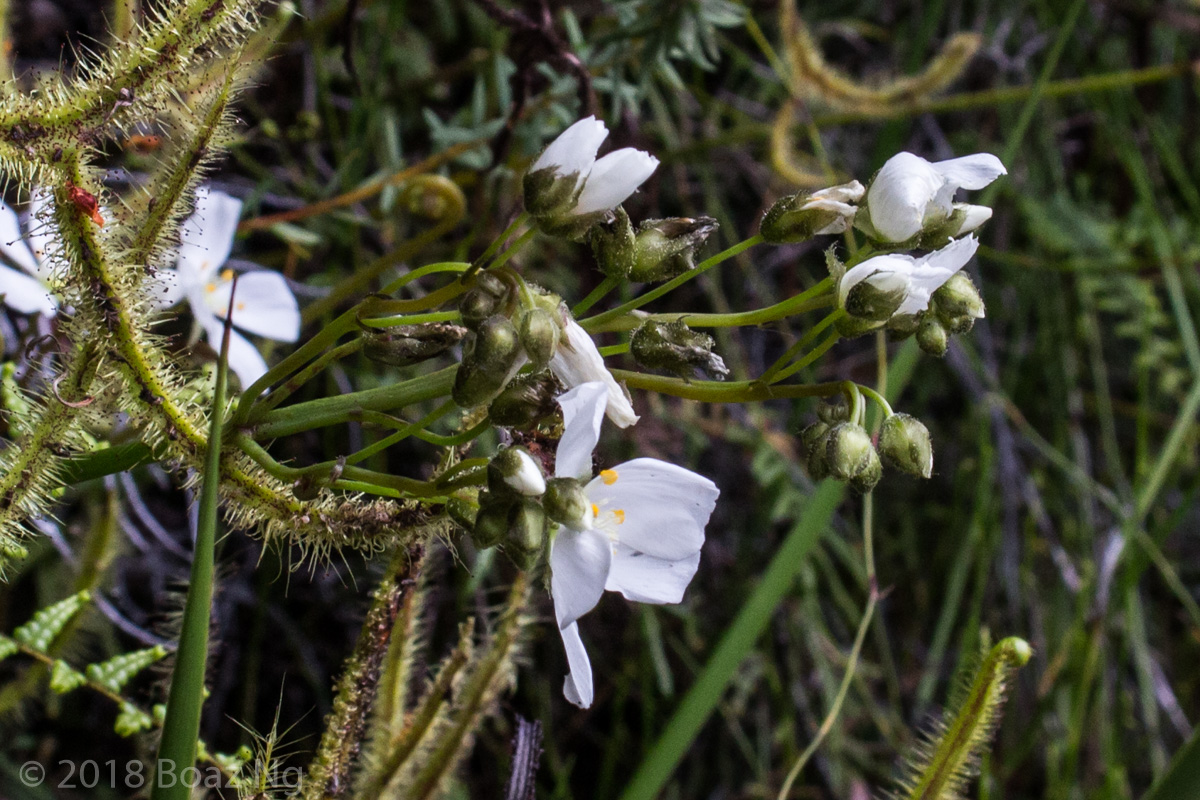
The ‘T-form’ of Drosera binata also grows along these trails. In contrast to the ‘dichotoma’ form, the ‘T-form’ is small and red, with once-bifurcated leaves that grow to around 15 cm in length. These plants can be spotted on the side of the walking trails where the disturbed banks create a bare exposed niche for the plants. Presumably, the dense scrub layer of the undisturbed cliff walls may choke out the diminutive plants (the ‘dichotoma’ form is able to reach through this layer with its long petioles). Of course a question to ask is whether the ‘T-form’ and the ‘dichotoma’ form represent two separate variations, or are the ‘T-form’ plants merely the immature seedlings of the larger plants. Given that the two varieties occupied different niches in the same habitat, I would say that they are distinct from each other.
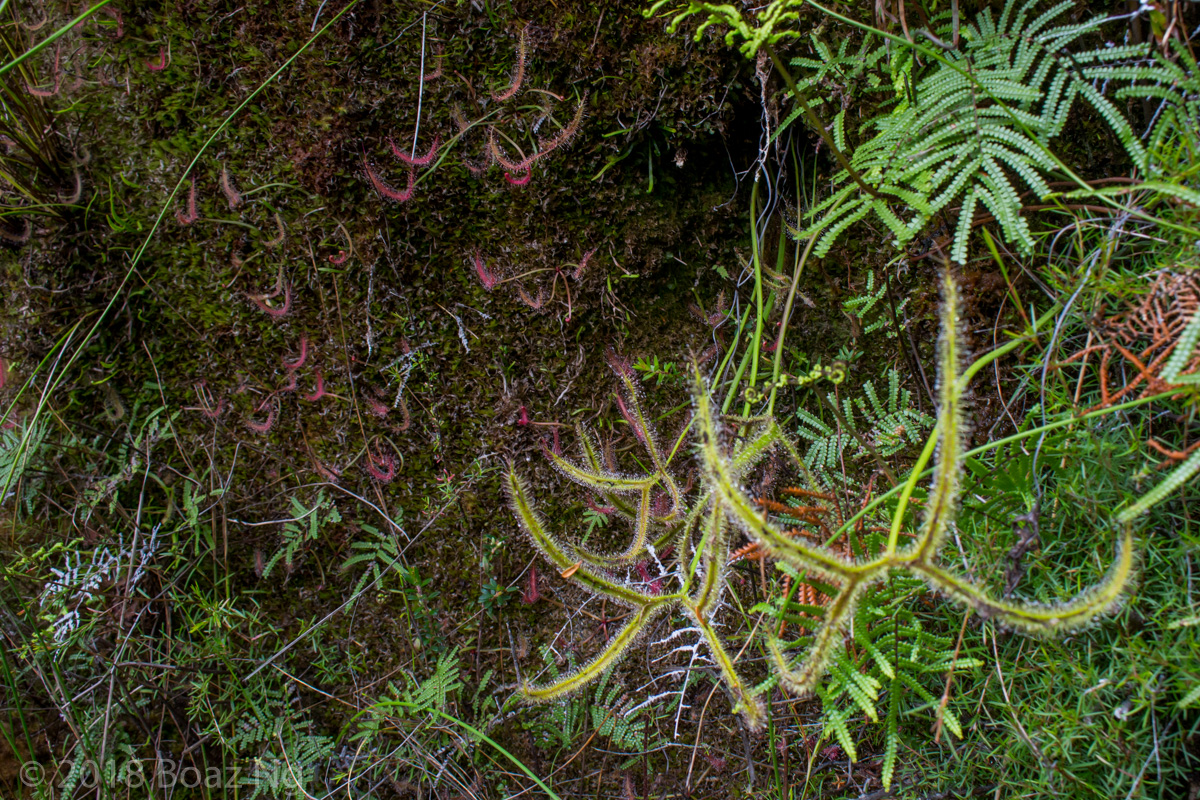
However, if the ‘T-form’ is actually distinct, then the question is: where are all the baby dichotomas? Although it was still quite early in the reproductive season (Drosera binata usually blooms in mid summer), I could not see any small plants that distinctly resembled a seedling ‘dichotoma’. Drosera binata is well known to have sudden ‘leaf jumps’ as plants mature from seedling to adult stages, with a corresponding change in the number of bifurcations. Several medium sized blush coloured plants seemed to represent an intermediate between the ‘T-form’ and the ‘dichotoma’ form – perhaps these were the immature ‘dichotoma’ or a hybrid? A good way to test would be to cultivate a ‘T-form’ plant to flowering size and observe if it changes its phenotype.
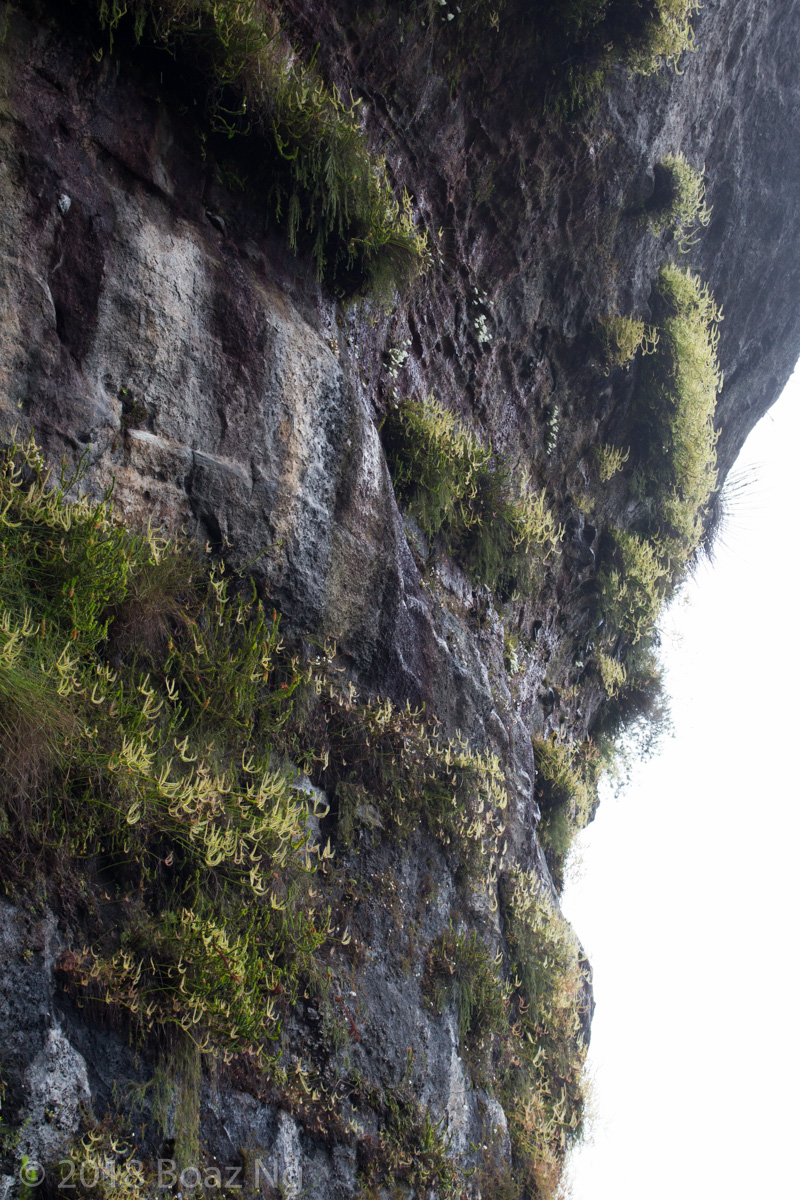
There is broader discussion as to whether the species Drosera binata actually represents a complex several closely related, but distinct species. This subject is of personal interest to me and I am continually travelling to different places to observe different populations of plants. Generally speaking, the red ‘T-form’ is associated with cold environments – I’ve seen it on Cradle Mountain in Tasmania, the Tongariro alpine area in New Zealand, and in the Blue Mountains, all of which experience cold winters. The ‘dichotoma’ form grows in latitudes around Sydney in a mix of lowland and highland sites. It is my personal opinion that the species complex can be divided into three valid species (or at least subspecies) – the ‘T-form’, the ‘dichotoma’ form and a complex of ‘multifida’-like plants but this is a discussion for another day.

